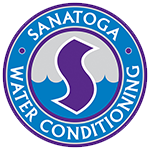Sulfate
Sulfate is found in almost all-natural water. There are a couple of ways that sulfur can get into water supplies. It may enter through waste discharges, which could indicate septic leaching into the water supply. Sulfate and sulfuric acid is used in production of fertilizers and chemicals, dyes glass, paper soaps, textiles, fungicides, insecticides and astringents. Sulfate can also be a naturally occurring contaminant in groundwater sources as some geologic formations such as gypsum, which contains calcium sulfate. Other common sulfate compounds found in drinking water are – magnesium sulfate, sodium sulfate, and potassium sulfate.
Sulfate can also be a present due to the use of copper sulfate in many public water supplies to reduce algae in raw water sources. The presence of sulfate can cause a pungent odor and a bitter or medicinal taste in drinking water making it unpalatable. At levels above the EPA’s guideline, it may cause a laxative effect, however this is a level not found in all drinking water sources, and it is correctable with proper water treatment.
How Is It Regulated?
The EPA regulated sulfate as a secondary contaminant, as it causes an unpleasant aesthetic effect. The established secondary MCL for sulfate is 250 mg/L* (expressed as S04–)*.
The World Health Organization has not established a health-based guideline for sulfates in drinking water, there are studies which link laxative and dehydration to high level of sulfates in water.
How Do You Measure It?
There are a variety of ways to test for sulfates, from simple colorimetric analysis to a more sophisticated and accurate analysis using an ion chromatography. Simple colorimetric test kits may be useful for estimating amounts sulfates, but if precise results are needed, sending to a laboratory to perform the analysis using Ion chromatography will yield more accurate results.
How Do You Treat It?
For household use a variety of treatments may be recommended based upon your application including level of sulfates and other contaminants present, space available for equipment and source of contamination. Some general recommendations include Oxidation and Filtration, Distillation or Reverse Osmosis. Ion exchange is commonly used in commercial and livestock applications in which large quantities of sulfate must be removed. A strong base also known as anion resin is used to be selective towards removing sulfates.
Contact Sanatoga Water Conditioning To Learn More Or To Schedule A Consultation.
Your Neighbors Love Their Cleaner, Safer, Better Water!
Our dedication to our customers is continually rewarded with referrals and testimonials about our water quality solutions!
